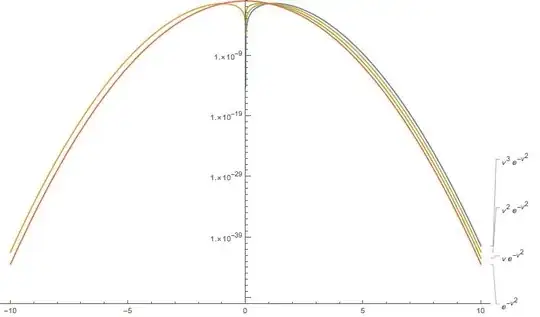I'm currently reading through a hydrodynamics lecture course and I'm confused at some of the key integrals that are derived. These integrals aid in deriving the moments of the Boltzmann equation.
First, the moments are:
$\int\big(\frac{\partial f}{\partial t}+v_j\frac{\partial f}{\partial x_j}+a_j\frac{\partial f}{\partial v_j})d^3\textbf{v}=0$,
where $f=f(x,v,t),\;d^3\textbf{v}=dv_1dv_2dv_3,\;v=\dot{x},\;a=\dot{v}$ and this equation is calculated three times with different factors: mass, momentum and energy $(m, mv, mv^2/2)$
Using the velocity moments of the the distribution function $f$ I can only get the first part of the integral, where $f$ is only differentiated by time, while the others are a bit more confusing, because I can't get the result they present.
E.g. they suggest that
$\int\frac{\partial f}{\partial v_i}d^3\textbf{v}=0$
if we just integrate by parts and the fact that since the total mass/momentum/energy must be finite then f must follow this condition, which I'm not sure where it comes from:
$\lim_{v \to \infty} v^2f=0$
That is my main problem, the other integrals seem more manageable, but
$\int\frac{\partial f}{\partial v_i}d^3\textbf{v}=0$
is difficult to understand.
The other integrals are:
$\int v_j\frac{\partial f}{\partial v_i}d^3\textbf{v}=-\delta_{ij}\frac{\rho}{m}$
$\frac{1}{2}\int v^2_j\frac{\partial f}{\partial v_i}d^3\textbf{v}=-\frac{\rho}{m}u_i$
I'm less worried about them since I believe that with understanding that one integral that I asked about above the rest would follow logically.
